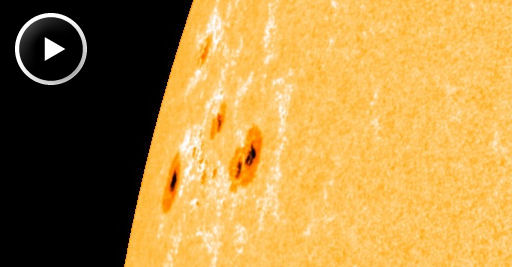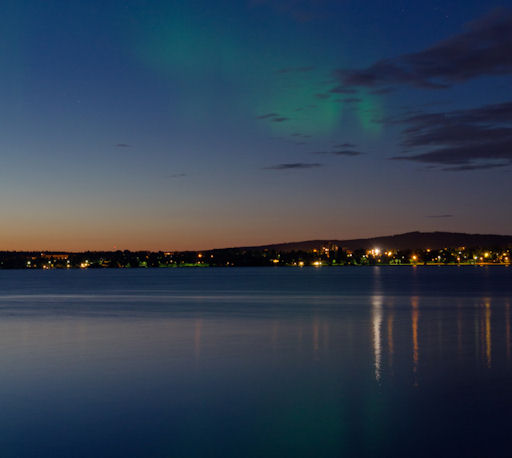Metallic photos of the sun by renowned photographer Greg Piepol bring together the best of art and science. Buy one or a whole set. They make a stellar gift. | | |
SPACE STATION METEOR: On August 13th during the peak of the Perseid meteor shower, ISS astronaut Ron Garan photographed a spectacular fireball from Earth orbit. NASA's Meteoroid Environment Office confirms that the meteor was likely a Perseid, as opposed to a sporadic (random) meteoroid.
EMERGING SUNSPOT: A big new sunspot is emerging over the sun's northeastern limb. AR1271 has at least four dark cores and it is crackling with small flares. The sunspot's entrance was captured in this 24-hour movie from the Solar Dynamics Observatory:

NOAA forecasters estimate a 60% chance of M-class solar flares during the next 24 hours. Because of its location near the sun's limb, AR1271 does not yet pose a threat for Earth-directed eruptions. This could change in the days ahead, however, as the sunspot turns to face our planet. Readers with solar telescopes are encouraged to monitor developments.
SUMMER AURORAS: A minor solar wind stream hit Earth's magnetic field during the early hours of August 15th, sparking auroras around the Arctic Circle. If the impact had occured just a few weeks ago, the midnight sun would have wiped out any Northern Lights, but now August nights are darkening enough to see geomagnetic activity. Göran Strand sends this picture from Frösön, Sweden:

"I was out photographing the moon when suddenly an aurora appeared," says Strand. "It lasted for about two minutes and it was quite big."
Arctic sky watchers should be alert for more summer auroras tonight. NOAA forecasters estimate a 30% chance of high-latitude geomagnetic activity as the solar wind continues to blow. Aurora alerts: text, voice.
August 2011 Aurora Gallery
[previous Augusts: 2010, 2009, 2008, 2007, 2006, 2005, 2004, 2003, 2002]
2011 Noctilucent Cloud Gallery
[previous years: 2003, 2004, 2005, 2006, 2007, 2008, 2009]
Potentially Hazardous Asteroids (
PHAs) are space rocks larger than approximately 100m that can come closer to Earth than 0.05 AU. None of the known PHAs is on a collision course with our planet, although astronomers are finding
new ones all the time.
On August 16, 2011 there were 1241 potentially hazardous asteroids.
Notes: LD means "Lunar Distance." 1 LD = 384,401 km, the distance between Earth and the Moon. 1 LD also equals 0.00256 AU. MAG is the visual magnitude of the asteroid on the date of closest approach. | | The official U.S. government space weather bureau |
| | The first place to look for information about sundogs, pillars, rainbows and related phenomena. |
| | Researchers call it a "Hubble for the sun." SDO is the most advanced solar observatory ever. |
| | 3D views of the sun from NASA's Solar and Terrestrial Relations Observatory |
| | Realtime and archival images of the Sun from SOHO. |
| | from the NOAA Space Environment Center |
| | the underlying science of space weather |
| | for out-of-this-world printing and graphics |

